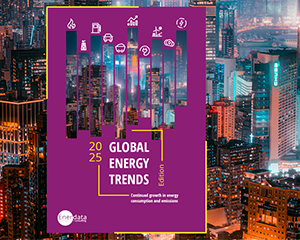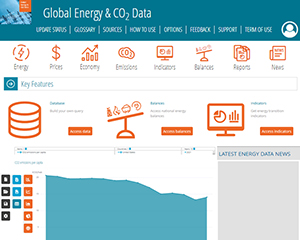Share of renewables in electricity production
The share of renewables in the global power mix has increased by nearly 12 pp since 2010 to 32% in 2024.
+34 pp
Rise in the share of renewables in Portugal’s power mix since 2010 to 87% in 2024.
The share of renewables in the global power mix has increased by nearly 12 pp since 2010 to 32% in 2024.
Since 2010, ambitious renewable policies and falling production costs for solar and wind power have contributed to significantly raise the share of renewables in the power mix, to 32% in 2024 (+12 pp since 2010). In 2024, this share increased by 1.7 pp, spurred by a surging solar and wind power generation (+8% and +28%, respectively). The share of renewables in the power mix is historically high in countries with large hydropower resources such as Brazil, Chile, Colombia, Canada, New Zealand, Sweden or Norway (over 60% of the electricity generated).
After a 3% drop in global hydropower generation in 2023 due to climate change and El Niño, hydropower generation recovered in many countries, and new solar and wind installations contributed to raise the share of renewables in the power mix in 2024. This share grew by 3 pp in Europe in 2024 to 51%, by 3 pp in Asia (+3 pp in China to nearly 33%, i.e., +14 pp since 2010), by 1 pp in the USA to over 23% (+13 pp since 2010), by 1 pp to 35% in Australia to 35% (+27 pp since 2010), and by a record 6 pp to nearly 69% in Chile (+29 pp since 2010 due to massive renewable installations).
This rise in hydropower, solar, wind - and nuclear - power generation in 2024 contributed to cut the CO2 intensity of electricity production (CO2 emissions per kWh generated) by 2.6% in 2024 (-1.2% in 2023).
Breakdown by country (%)
World
Trend over 1990 - 2024 - %
% in electricity production (2024) - %
Our 2025 edition of Global Energy Trends presents insights on essential energy data.
We have contextualised these findings against long-term climate targets :
- Which must accelerate their efforts to meet 2050 targets?
- What are the underlying drivers explaining why Europe is struggling to achieve the Paris Agreement objectives?
- Which regions are making substantial contributions to climate mitigation?
Need more data? All the information presented in this energy data tool are extracted from Global Energy & CO2 Data service, the most comprehensive and up-to-date database on all renewable resources: hydro, wind, solar, geothermal and biomass. Access to the whole renewable value chain information: renewable energy production capacities by technology, power generation by technology, biomass, biofuels, and indicators.
Discover this service


